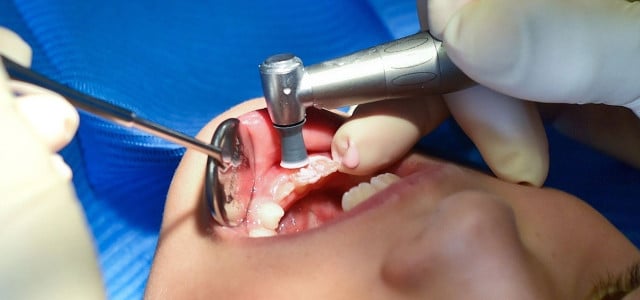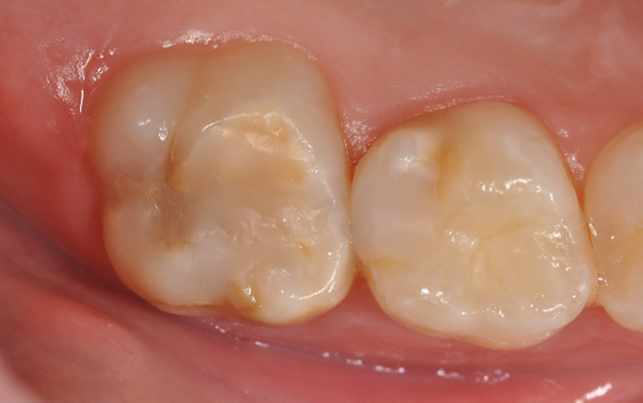
Does your child’s teeth hurt when brushing? Are they stained and appear rough? These could be chalk teeth. Dentists are warning about the new “widespread disease”; around one in seven children is now affected. What science knows about it.
Chalky teeth are unpleasant: your teeth hurt when you eat, drink or brush your teeth, and they also hurt when you drink very warm or cold drinks. They also look unsightly: They have furrows and are sometimes whitish, yellowish or even brownish in color. Typically, one to four of the first permanent molars are affected, i.e. the teeth that erupt around the age of six. In some cases, chalk teeth also occur on incisors. Experts speak of molar incisive hypomineralization, or MIH for short. In some places, tooth enamel has fewer minerals than usual.
How many children are affected?
According to the 2018 overview study ‘Global burden of molar incisor hypomineralization’, an estimated 13 to 14 percent of children worldwide are affected. To this end, 99 studies with more than 113,000 participants from 43 countries were evaluated.
The 5th German oral health study from 2016, on the other hand, showed a significantly higher number. At that time it was said that 28.7 percent of twelve-year-olds have at least one hypomineralized tooth with MIH. We don’t know why the numbers were so high, says the President of the German Society for Pediatric Dentistry (DGKiZ), Katrin Bekes. The new data from the 6th oral health study are eagerly awaited early next year.
The “German Society for Dentistry, Oral and Maxillofacial Medicine” (DGZMK) speaks of a new widespread disease. The chalk teeth are not only unaesthetic and painful, their rough surface also makes them particularly susceptible to caries.

What causes chalk teeth?
Chalky teeth arise because the mineralization of tooth enamel is disturbed. Why this is is not yet entirely clear. Environmental toxins such as bisphenol A (BPA), which are ingested through food, appear to play a significant role in its development. According to doctors, other conceivable causes include problems in the last month of pregnancy, premature births, childhood illnesses such as bronchitis, pneumonia or middle ear infections or the use of antibiotics.
The affected teeth usually only appear around the age of six or later, and only then can the diagnosis be made – this makes it more difficult to research the cause, explains Katrin Bekes, President of the German Society for Pediatric Dentistry (DGKiZ).
Connection with antibiotic intake
One cause of chalky teeth that is discussed is taking antibiotics. The Barmer health insurance company explained in its dental report that chalk teeth are caused or at least promoted by taking antibiotics. Prof. Dr. Christoph Straub, CEO of the health insurance company, said: “The prescription of antibiotics is clearly linked to the appearance of chalk teeth. However, it is still unclear how exactly this interaction works. Further investigation is required here.”
We take antibiotics to fight serious illnesses – there is often no alternative. But they are only one of the possible causes of chalk teeth. Children and adults also come into much more contact with other substances that can also lead to dental disease in everyday life – even though that doesn’t have to be the case. These include BPA, for example.
BPA changes the hormone balance
BPA is one of the most commonly used synthetic chemicals worldwide. The problem: It acts like a kind of hormonal pollutant because it has an estrogen-like effect and changes the hormonal balance.
BPA is extremely difficult to avoid in everyday life – it is found in packaging, plastic tableware, plastic pacifiers, food and beverage cans. In human studies, BPA was found in blood, urine, amniotic fluid and uterine tissue.
Another cause discovered
Michael Hubbard from the University of Melbourne and his colleagues uncovered further insights into chalk teeth. They examined tooth enamel formation and found that the protein amelogenin is produced by the enamel-forming cells and forms the still small mineral crystals in the enamel. When tooth enamel hardens, an enzyme breaks down the protein amelogenin. This allows the mineral crystals to grow.
With chalk teeth, the degradation does not work as it should. The researchers found that the soft, discolored areas on chalk teeth contain three to 15 times more protein than is normal for finished, hardened tooth enamel. During the mineralization of the enamel, the protein was apparently not sufficiently broken down. The excess proteins mean that the tooth enamel cannot be mineralized and the tooth enamel cannot harden.
Serum protein prevents mineralization
But how is it that the proteins are not broken down? The researchers found the serum protein albumin in affected areas of the tooth – a molecule that is not found in intact tooth enamel. This imitates amelogenin by attaching itself to the immature tooth enamel crystals, thereby preventing the mineralization that would otherwise occur due to amelogenin.
For better teeth: What can be done against chalky teeth?
Affected children should go to the dentist regularly, recommends Bekes. Professional dental care and good oral hygiene are essential. To prevent tooth decay, brushing your teeth twice a day with a toothpaste containing fluoride is recommended. “Studies show that children with chalk teeth have a higher risk of developing tooth decay.”
With material from dpa.
Read more on Techzle\.com:
- BPA-free drinking bottles
- Brushing your teeth after eating: the 30-minute rule is outdated
- Live plastic-free: live without plastic quickly with 15 tips
** marked with ** or orange underlined Links to sources of supply are partly partner links: If you buy here, you are actively supporting Techzle\.com, because we then receive a small part of the sales proceeds. More info.